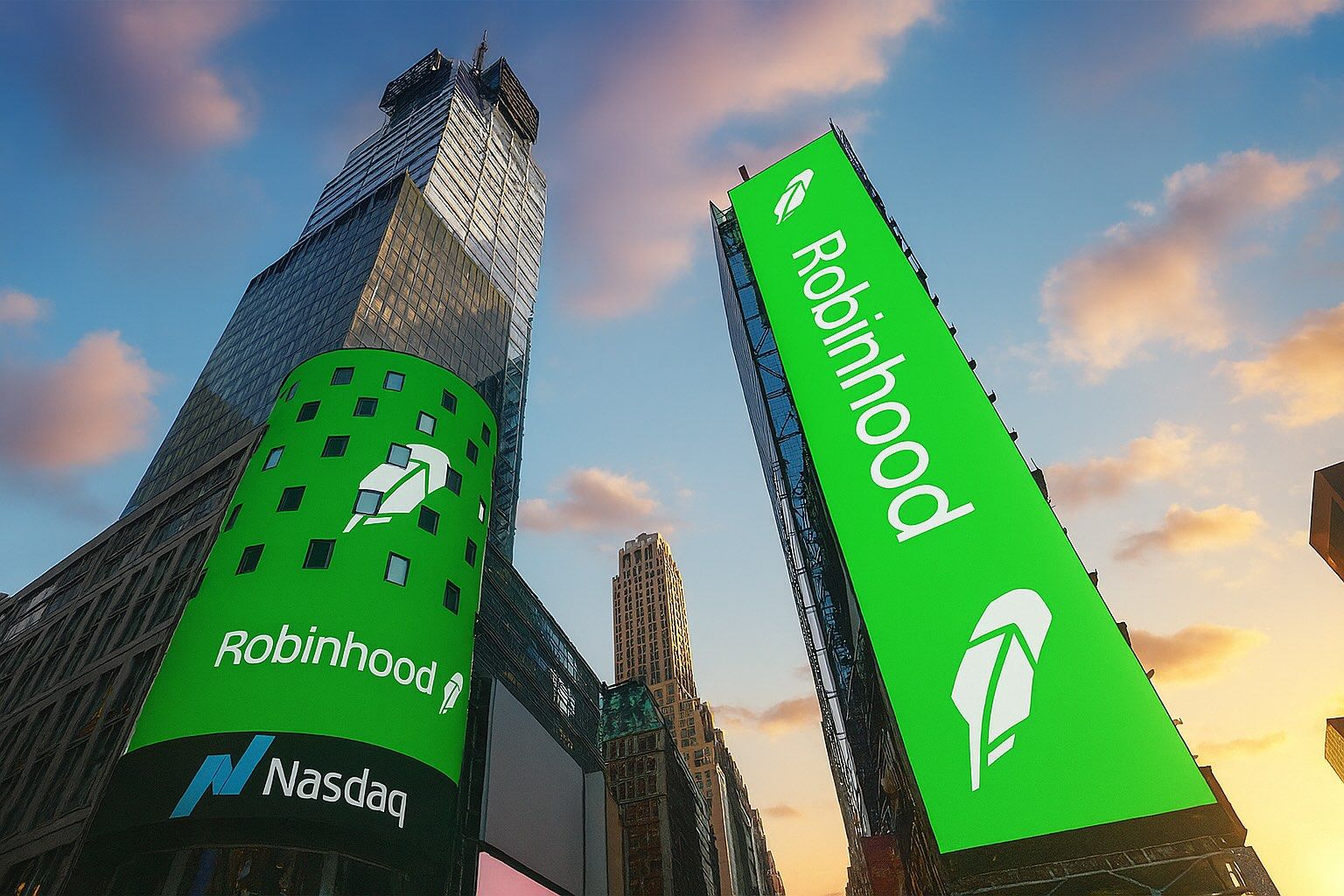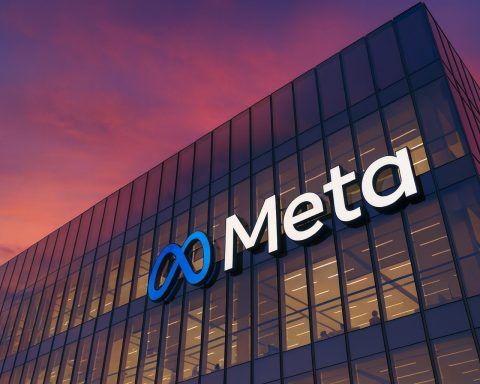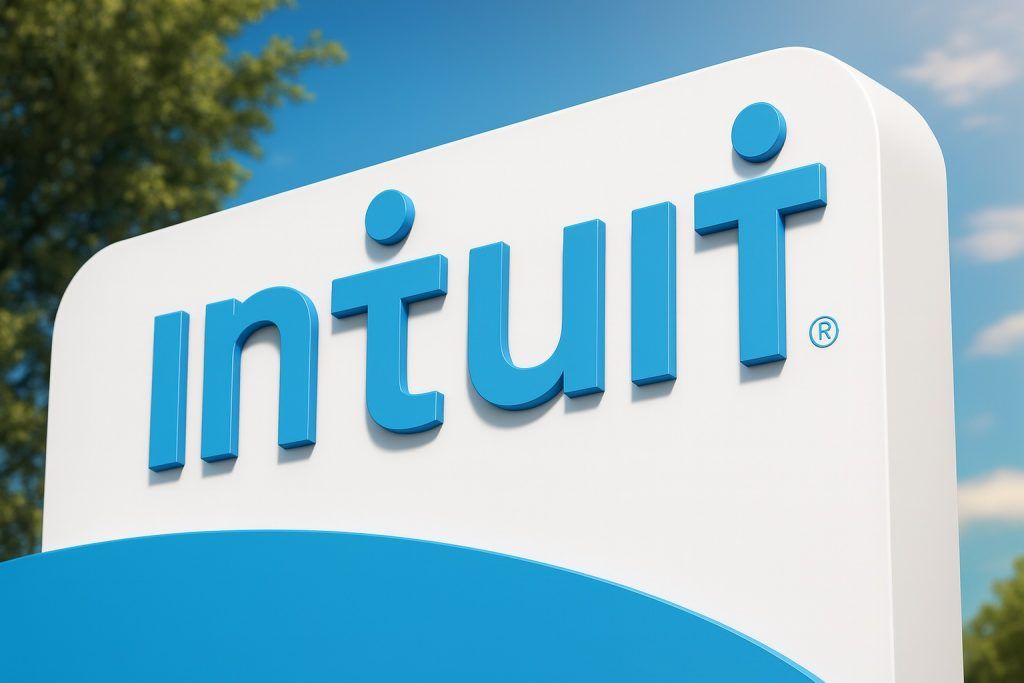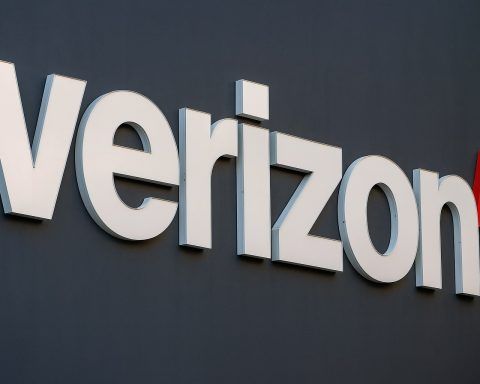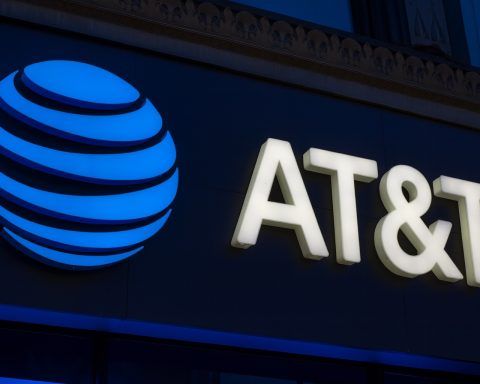Robinhood Markets (NASDAQ: HOOD) is catching its breath today after a sharp two‑week slide, even as Wall Street analysts, hedge funds and new 24/7 prediction markets keep the stock firmly in the spotlight.
In late-morning U.S. trading on 18 November 2025, Robinhood shares are hovering around the mid-$110s, modestly higher on the day and stabilising after Monday’s 5.3% drop from $122.50 to $115.97. [1] Despite that pullback, the stock is still up well over 200% in the past year, with a 52‑week range between roughly $30 and $154 — putting HOOD among the very top performers in the financial sector this year. [2]
Below is a breakdown of what’s moving Robinhood Markets stock today, 18 November 2025.
Robinhood Markets stock today: stabilising after a high‑octane pullback
According to intraday quotes, Robinhood opened near $113.90 and has traded roughly between $112 and $116 so far today, a relatively calm session by HOOD’s recent standards. [3]
That follows a volatile stretch:
- Monday, 17 Nov: HOOD fell about 5.3%, dropping from $122.50 to $115.97 in a single session, with the price swinging more than 7% intraday. [4]
- Last two weeks: The stock is down roughly 21% over that period, even after a spectacular run-up earlier in the year. [5]
- Year-on-year: Despite the recent correction, Robinhood’s share price has climbed roughly 200–230% over the past 12 months, with a 52‑week range of about $29.66 to $153.86. [6]
Fundamentally, the stock now carries a market cap around $100–105 billion, a price‑to‑earnings ratio near 48 and a PEG ratio of about 2.8, with a high beta of ~2.4, underlining just how sensitive HOOD is to swings in growth and tech sentiment. [7]
Today’s modest bounce comes against a tough macro backdrop: global equity markets are under pressure as high‑flying tech and crypto names sell off, with the S&P 500 down around 1% and the Nasdaq off about 1.5% in early U.S. trade amid concerns about stretched valuations in AI and other “story” stocks. [8] As a high‑beta, momentum‑driven name, Robinhood tends to feel those risk‑off waves quickly.
Wall Street raises the bar: fresh price target hikes up to $155+
One of the key storylines for HOOD today is a fresh round of price‑target hikes targeting the mid‑$100s and beyond.
A new note highlighted by Finviz shows that:
- Cantor Fitzgerald lifted its price target from $130 to $155 on 6 November, maintaining an Overweight rating.
- Keefe, Bruyette & Woods (KBW) raised its target from $121 to $135, keeping a Market Perform stance. [9]
Both moves came directly after Robinhood’s blockbuster third‑quarter results (more on those below). Cantor pointed to 100% year‑over‑year revenue growth, record trading volumes in equities and options, and a 119% jump in total platform assets to roughly $333 billion, helped by $20.4 billion in record quarterly net deposits. [10]
Earlier this autumn, other firms had already ratcheted up expectations:
- KeyCorp raised its HOOD target from $60 to $110.
- JMP Securities reportedly moved its target to around $170, calling for “market outperform.”
- Morgan Stanley bumped its objective into the mid‑$140s with an equal weight rating. [11]
Taken together, these calls paint a picture: even after a massive rally, several major brokerages still see upside from current prices — but often with a big asterisk about volatility and execution risk.
Blowout Q3 2025: revenue doubles, profit nearly quadruples
Behind the analyst enthusiasm is one hard fact: Robinhood’s Q3 2025 numbers were huge.
According to the company’s own disclosures and multiple independent reports:
- Revenue doubled year‑on‑year to roughly $1.27 billion, beating Wall Street expectations. [12]
- Net income jumped to about $556 million, nearly four times the prior year, or $0.61 per share, ahead of analyst estimates in the low‑$0.50s. [13]
- Transaction‑based revenue soared to around $730 million, more than doubling, driven by brisk activity in crypto, options and equities. [14]
- Interest income climbed to roughly $456 million, up about 66% year‑over‑year as higher rates and larger cash balances boosted net interest revenue. [15]
- Subscription and other revenues — including Robinhood Gold, which now counts about 3.9 million subscribers — roughly doubled to $88 million. [16]
At the same time, management nudged 2025 adjusted operating expense guidance up toward $2.28 billion, reflecting heavier investment in new products like prediction markets and futures. [17]
The Q3 print underscored a broader transformation: Robinhood is no longer just the “free stock‑trading app.” Options, crypto, futures and now event‑based contracts account for the majority of transaction revenue, with some estimates suggesting nearly 90% of those revenues now come from non‑stock products. [18]
Prediction markets go 24/7 – and become a core narrative for HOOD
One of the most eye‑catching headlines for 18 November is that Robinhood’s prediction markets now trade 24/7, giving retail traders round‑the‑clock access to event contracts tied to economic data, interest‑rate decisions and major sports tournaments. [19]
Recent reporting shows:
- Robinhood handled about 2.3 billion event contracts in Q3 2025, then another 2.5 billion contracts in October alone, signalling explosive growth in this new product line. [20]
- The combination of prediction markets and the Bitstamp acquisition is already generating around $100 million in annualised revenue, even though event contracts still make up a relatively small share of overall income. [21]
- Management — including incoming CFO Shiv Verma — has explicitly called prediction markets a key investment area for Robinhood going forward. [22]
The move to 24/7 access follows regulatory work with Kalshi, the exchange powering Robinhood’s event contracts, and reflects an effort to blur the traditional line between “trading” and “betting” on real‑world outcomes — a trend that has drawn both excitement and criticism. [23]
From an investor’s standpoint, this matters because prediction markets:
- Add another high‑margin, high‑engagement revenue stream,
- Diversify Robinhood beyond cyclical equity volumes, and
- Potentially deepen customer stickiness as users engage with the app even outside normal stock‑market hours.
But they also raise regulatory and reputational risks, especially if critics persuade regulators that event contracts are closer to gambling than investing.
October DARTs: trading activity is still climbing
On Monday, 17 November, Robinhood released its October 2025 operating data, which was picked up in a Zacks report and is still driving conversation today. [24]
Key takeaways from that update:
- Equity DARTs (Daily Average Revenue Trades) in October rose to about 3.1 million, roughly 55% higher than in October 2024 and a few percent above September 2025. [25]
- Options DARTs climbed by more than 55% year‑over‑year, underscoring how central options have become to Robinhood’s revenue mix. [26]
- Crypto DARTs also increased versus last year, supported by resurging interest in digital assets earlier in the autumn. [27]
Zacks has also flagged Robinhood as one of a handful of momentum “anomaly” stocks, highlighting its outsized 12‑month returns even amid sharp, short‑term pullbacks — exactly the pattern traders are seeing over the past two weeks. [28]
For long‑term investors, the DARTs data supports the idea that the retail‑trading boom that began during the pandemic hasn’t simply vanished; instead, it’s morphed into a more diversified, product‑rich platform that still sees rising user engagement.
Big money steps in: institutional buying and hedge‑fund interest
Another notable 18 November headline comes from MarketBeat, showing that PNC Financial Services Group has significantly increased its position in HOOD:
- PNC boosted its holdings by 32.1% in Q2, to 41,475 shares worth roughly $3.88 million at the time of filing.
- Several other institutions — including smaller advisory firms and quant managers — have also added exposure.
- In total, about 93% of Robinhood’s stock is now held by institutional investors, according to the same report. [29]
On the hedge‑fund side, a fresh Insider Monkey piece today highlights a Baron FinTech Fund investor letter that calls out Robinhood as a key holding and credits the company’s rally to “multiple growth catalysts,” including rapid asset growth and surging trading activity. [30]
And all of this comes just weeks after a major structural milestone: Robinhood joined the S&P 500 index on 22 September 2025, replacing Caesars Entertainment, following a wave of index rebalancing by S&P Dow Jones Indices. [31] Inclusion in the benchmark forces passive funds and ETFs to own HOOD, locking in a base of long‑only demand that simply didn’t exist a year or two ago.
Put together, these data points suggest that HOOD is no longer just a meme‑stock favorite of day traders; it has become a mainstream, institutionally‑owned fintech with full index‑fund backing.
Valuation, risks and what to watch next
With all the growth, Robinhood’s valuation has inevitably become a point of debate.
Based on recent metrics:
- The stock trades at roughly 48× trailing earnings and a PEG ratio around 2.8, levels that imply investors expect sustained, above‑market growth. [32]
- HOOD’s beta of about 2.4 means it tends to move more than twice as much as the broader market — both up and down. [33]
Several commentators have argued that, for a relatively young company whose business is still tightly tied to trading sentiment, those multiples leave little room for error. A recent analysis on The Motley Fool, for example, urged more conservative investors to be cautious until Robinhood proves it can deliver robust profits across a full market cycle rather than just during trading booms. [34]
Key risks and watch‑points from here include:
- Macro headwinds: As today’s global sell‑off shows, a broad risk‑off move in high‑beta tech and crypto can hit HOOD hard, regardless of its fundamentals. [35]
- Regulation: Prediction markets and crypto trading, two of Robinhood’s fastest‑growing businesses, also attract the closest regulatory scrutiny. Past enforcement actions and settlements in areas like payment for order flow and crypto compliance show that regulatory risk is real. [36]
- CFO transition: Longtime CFO Jason Warnick plans to retire in 2026, with Shiv Verma already named as successor. Investors will watch closely to ensure Robinhood maintains financial discipline while still investing aggressively in growth areas. [37]
- Trading‑cycle sensitivity: A large portion of revenue still depends on trading volumes and volatility. If retail engagement cools, revenue can fall quickly, as investors saw in earlier post‑meme‑stock lulls.
On the flip side, bulls point to:
- Explosive user and asset growth,
- A platform that now spans stocks, options, futures, crypto and event contracts, [38]
- S&P 500 inclusion and heavy institutional ownership, and
- A business that has already moved from losses to sizeable, recurring profitability over the past two years. [39]
Bottom line on HOOD for 18 November 2025
For today, Robinhood Markets stock is trying to stabilise in the mid‑$110s after a sharp, two‑week shake‑out, even as its fundamental story looks stronger than ever following a blowout Q3, surging October trading metrics and the rollout of 24/7 prediction markets.
Whether HOOD’s current valuation ultimately proves justified will depend on two big questions:
- Can Robinhood sustain this level of trading activity and profitability when markets aren’t roaring?
- Will regulators allow prediction markets and crypto products to scale as aggressively as management hopes?
For now, HOOD remains exactly what many traders want it to be: a high‑growth, high‑volatility fintech stock at the centre of several of Wall Street’s biggest themes — from AI‑era speculation to the gamification of markets.
As always, this article is for information and news purposes only and should not be taken as personal investment advice. Anyone considering trading or investing in HOOD should evaluate their own risk tolerance and, if needed, consult a qualified financial adviser.
References
1. stockanalysis.com, 2. www.investing.com, 3. stockanalysis.com, 4. stockanalysis.com, 5. stockinvest.us, 6. www.investing.com, 7. www.marketbeat.com, 8. www.whec.com, 9. finviz.com, 10. finviz.com, 11. www.marketbeat.com, 12. www.barrons.com, 13. www.reuters.com, 14. www.reuters.com, 15. www.tradingview.com, 16. www.tradingview.com, 17. www.reuters.com, 18. www.wsj.com, 19. www.tradingview.com, 20. www.tradingview.com, 21. www.tradingview.com, 22. www.reuters.com, 23. www.tradingview.com, 24. www.zacks.com, 25. www.zacks.com, 26. www.zacks.com, 27. www.zacks.com, 28. www.zacks.com, 29. www.marketbeat.com, 30. www.insidermonkey.com, 31. press.spglobal.com, 32. www.marketbeat.com, 33. www.marketbeat.com, 34. www.fool.com, 35. www.whec.com, 36. en.wikipedia.org, 37. www.reuters.com, 38. en.wikipedia.org, 39. apnews.com
